Odisha Travel Guide
1. Pipli:
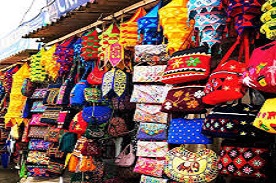
Pipli village is known for designing beautiful Applique handicrafts, located at 36 kilometers from Puri and 18 kilometers from Bhubaneswar. Variety of handicrafts is made here in six styles -‘Bakhia’, ‘Taropa’, ‘Ganthi’, ‘Chikana’, Button Hole and ‘Ruching’ by artisans such as puppets, handbags, wall hangings, purses, cushion covers, bedspreads, lampshades, pillow covers, table cloths, lanterns, etc. The craft, locally called Chandua, is used to adorn the chariots of Lord Jagannath and his siblings during the annual Ratha Yatra.
2. Raghurajpur:
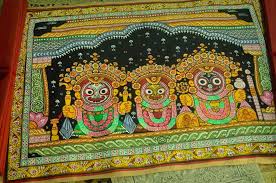
Raghurajpur is heritage crafts village, famous for its master Pattachitra painters, located at 14 km away from Puri, The pattachitra paintings are made over a piece of cloth known as Patta or a dried palm leaf, which is first painted with a mixture of chalk and gum. The art form is used to decorate Lord Jagannath and his siblings. There is different types of crafts made by artisans here like Atta Painting, Palm leaf painting / engraving, tusser / silk painting, stone carving, coconut painting, wood carving, Papier Machie / Mask, Cow dung toys, Ganjapa playing cards. This village is also famous for the birthplace of the Odissi dance Guru Shri Kelu charan Mohapatra.
3. Jagannath Temple, Puri
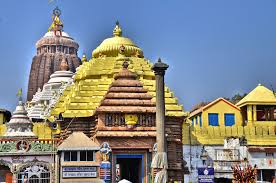
The Jagannath Temple was built by the Ganga dynasty king Anantavarman Chodaganga in the 12th century CE, located in Puri. The main temple is constructed in such a way that no shadow of the temple falls on the ground during day time. The entire temple complex is enclosed within two concentric walls, the Kuruma Bheda (Inner wall) and the Meghnad Pachira (Wall). The main entrance to the temple is through Singhadwara located on the Eastern front of the temple with three other entrances along the four cardinal directions. The temple is famous for its annual Ratha yatra and worshipped of Lord Jagannath, Balabhadra and Subhadra.
4. Sonar Gorang, Puri
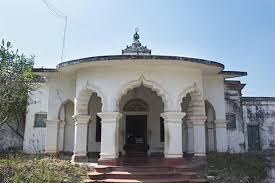
Sonar Gauranga Temple is situated 3 kilometer distance from the Lord Jagnnath temple and also close to the beach, dedicated to Lord Gauranga. Temple are shrines of Lord Jagannatha, Balaram and Subhadra, Sri Rama and Lord Vishnu.
5. Narendra Pokhari, Puri
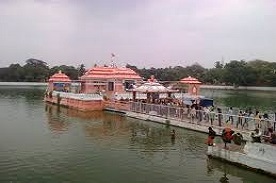
This is the largest pond in Orissa, situated at Mauza Dandimala Sahi, 1 km distance from Jagannath Temple and 2.5 km from Puri Junction. It is also known as Chandana Pushkarini. The pond was built in 15th century AD by Narendra Dev, who shouldered the responsibility of the kingdom with Purushottama. The pond covers 16 ghats which provide an opportunity for the pilgrims to have a holy bath. This is the holy pond in which the famed Chandana Yatra of Lord Jagannath celebrated annually. During this festival all the big and small deities are taken out of their temples and floated in the pious water of this pond. The deities are applied with chandana paste and then washed with the sacred water of this pond
6. Gundicha Temple, Puri:
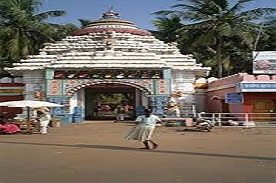
Gundicha temple is famous temples in Puri, located in the Gundicha square, near Puri bus stand.It is also known as ‘Gundicha Ghar’, ‘Gundicha Mandir’. The temple built in typical Kalingan style. The temple is sorrounded by a wall and stands in the middle of a garden. The whole temple is built of light gray sand stone.The most important sanctuary of Lord Jagannath is the Sree Gundicha temple, the abode to which Jagannath, Balabhadra and Subhadra are driven each on his or her wooden car once in a year, during the car festival. History about this temple is that Gundicha was the queen of the King Indradyumna, the founder of the Jagannath temple. Because of deep devotion of the queen Gundicha for Lord Jagannath, Lord prefers to pay a visit to her house for nine days during Car Festival, the Car Festival is also known as ‘Sree Gundicha Yatra’.
7. Chilka Lake:
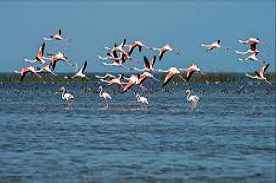
Chilika Lake is largest coastal lagoon in india and the second largest in the world, spread over the Puri, Khurda and Ganjam districts of Odisha, covering an area of over 1,100 km. It is the largest wintering ground for migratory birds and home to a number of threatened species of plants and Animals. The Lake is an ecosystem with large resources. In 1981, Chilka Lake was designated the first indian wetland of international important under the Ramsar Convention.
8. Ramchandi Temple:
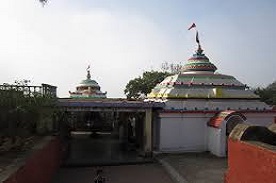
At a distance of 7 km before Konark, Ramachandi Temple is situated on the banks of Kushabhadra River. The temple is dedicated to Goddess Ramachandi which is more ancient than the Sun Temple at Konark. Apart from the temple, Ramachandi Beach situated at the merging point of Kushabhadra River and Bay of Bengal. The beach is named after Goddess Ramachandi. Covered with golden sands and huge palm trees, the beach is ideal for taking long walks and collecting shells. The beach offers some activities like Sailing, Boating, Swimming and Sun-bathing.
9. Konark Sea Beach:
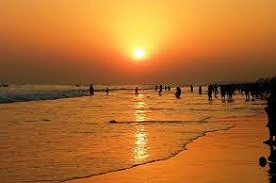
Konark beach is also known as Chandrabhaga Beach is situated three km from Konark Sun temple and 30 km from Puri. It is a beautiful beach, most clean and calm. This beach is also famous for the sand art of reputed sand artist. Every year International Sand art festival is organized at Chandrabhaga sea beach on first week of December month. Many local and foreign artists participate in this five days function
10. Konark Sun Temple:
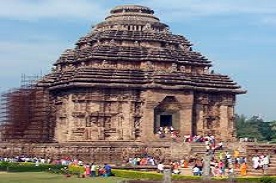
The temple is a UNESCO World Heritage site and is one of the architectural wonders of India. It is situated 35 kms from Puri and 65 kms from Bhubaneshwar, The temple is designed in the shape of a huge chariot drawn by seven horses with 12 wheels, carrying Surya, the sun god, across the heavens. The Konark Sun Temple was built from stone in the form of a giant ornamented chariot, dedicated to the Sun god, Surya where the first rays of the sun fall on the entrance of the temple. The temple was built by the King Narasimhadeva in the 13th century CE. The temple was also called Black Pagoda attributing to its dark facade by the Europeans who used it for navigation for their ships. It is said that the temple could draw ships to the shore due to its magnetic powers.
11. Dhauli:
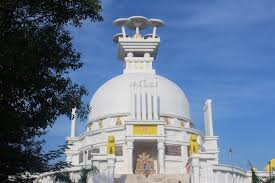
The Dhauli Shanti Stupa or the Peace Pagoda was built by the Japan Buddha Sangha and the Kalinga Nippon Buddha Sangha in 1972 which is a small town 8 Km away from Bhubaneswar, located on the bank of Daya River.This site is also famous where Kalinga War was fought. After Kalinga War, Ashoka, the Great Warrior, became a follower of Buddhism and spent the rest of life spreading the teachings of Buddha far and wide in Orrisa, India and beyond.
12. Khandagiri and Udaigiri Caves
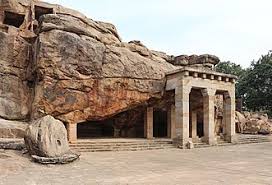
Udayagiri and Khandagiri Caves, formerly called Kattaka Caves or Cuttack caves, are partly natural and partly artificial caves of archaeological, historical and religious importance located 7 KM from Bhubaneswar. The caves are situated on two adjacent hills, Udayagiri and Khandagiri, mentioned as Kumari Parvata in the Hathigumpha inscription. These ancient rock cut caves were first discovered by a young British Officer Andrew Sterling in the 19th century AD.
13. Tribal Museum:
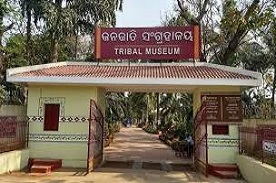
The “Museum of Tribal Arts and Artefacts” popularly known as Tribal Museum was established in the year 1953. It gives an insight into the life of a tribals. On display are immaculate replicas of tribal huts of various tribal communities and artefacts collected from different tribal groups in Odisha.
14. Pathani Samanta Planetarium:
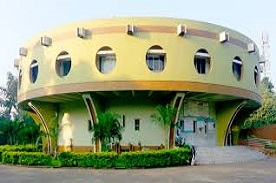
This planetarium is situated in Bhubaneswar and known for astronomer Pathani Samanta. It was founded for creating awareness about activities like night sky viewing, audio visual programs and poster shows. It also displays various astronomical devices. The Planetarium also encourages research in the field of astronomical science along with providing financial help.
15. Lingaraj Temple:
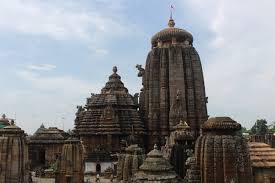
Lingaraja Temple is an ancient temple situated in the city of Bhubaneswar, dedicated to Lord Shiva. This was built in the 7th century by the King Jajati Keshari.The central tower of the temple is 180 ft (55 m) tall. The temple represents the quintessence of the Kalinga architecture and culminating the medieval stages of the architectural tradition. The Lingaraj Temple is especially famous for its Mahashivratri celebrations when the whole sanctum is dressed up in flowers, lanterns, and lights.
16. Rajarani Temple:
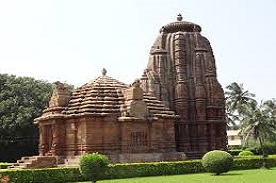
The temple was built during Somavamsi rule in the 11th century AD in Bhubaneswar, dedicated to Lord Shiva Historians speculate that it was called Indresvara Temple. Because of the red and yellow sandstone called Rajarania that was used in its construction so temple known as Rajarani Temple. It is built in the Pancharatha Style. The temple today is managed by the Archeological Survey of India (ASI).
17. Muktesvara Temple:
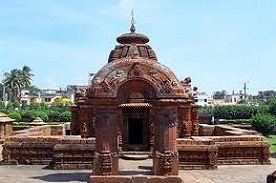
Mukteshvara Temple was built by Yayati I, the king of Somavamshi Dynasty in 10th-century, dedicated to Lord Shiva, located in Bhubaneswar. This Temple is the finest example of a perfect blend between sculpting and architecture. Various sculptures of ascetics forming different meditating poses can be found all around the temple so it is also known as the “Gem of Odisha architecture” or “Kalinga Architecture”. The most important feature of the Mukteshvara Temple is the torana, or the arched gateway, dating back to about 900 CE and showing the influence of Buddhist architecture.
18. Nandankanan Zoo:
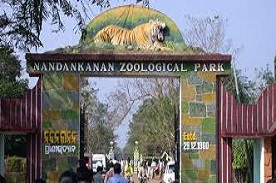
Nandankanan is the 2nd biggest zoological park in India which is spread in 437-hectare located in Bhubaneswar. It is established in 1960 and was opened for the public in 1979. It is the first zoo to join World Association of Zoos and Aquariums (WAZA) in 2009. It also contains a botanical garden and bird sanctuary. It is a first zoo in india with white tiger safari where the visitors are confined in a vehicle and the animals roam in the open jungle
19. Gopalpur Beach
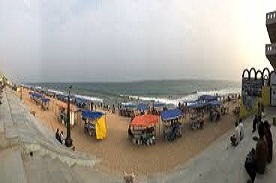
Gopalpur is a coastal town in Ganjam district in the southern part of Odisha. Gopalpur was the place where the first ever modern hotel was built in Odisha and probably the first ever beach resort of the country. As the beach is east facing, the sunrise and sunsets are spectacular. During ancient times, Gopalpur served as an important port for the seafarers of ancient Kalinga. Even during the World War –I, it was an important military port where soldiers used to embark on a journey to Burma
20. Bhitarkanika National Park:
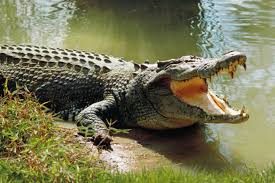
Bhitarkanika National Park is is located on the coast, in the deltas of the Brahmani and Baitarani rivers Kendrapara district in Odisha. It is surrounded by Wildlife Sanctuary, which is spread over 672 km. It is a place to sight the giant Salt Water Crocodile, some growing to 23 feet in length, along with other reptiles like the Water Monitor Lizard and the King Cobra. Spotted deers and wild boars are abundant in the park and can be spotted at all the major locations.
21. Lalitgiri
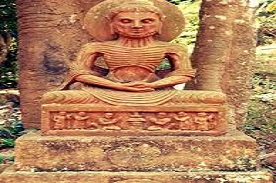
Lalitgiri lies between the valley of two rivers Birupa and Chitrotpala. Also known as Naltigiri is a major Buddhist complex of Odisha, located in cuttak district and 83 km east of Bhubaneswar. The place constitutes stupas, monasteries, and Buddha images as its main attractions.It was a prime place of Tantric Buddhism. Some excavations were carried out at Lalitgiri in 1977 by Utkal University. The site was discovered in 1905, it was excavated as late as 1985-1991, based on the chronicles of the famous Chinese Traveler Hiuen T’sang.
22. Ratnagiri:
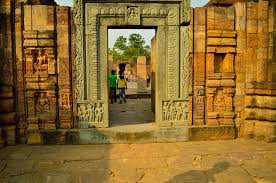
Ratnagiri also known as “hill of jewels” located on a hill in between the Brahmani and Birupa rivers in Jajpur district. It is only monastery in India to have a curvilinear roof. It is the site of a ruined mahavihara which is the major Buddhist monastery in modern Odisha, India. It is close to other Buddhist sites in the area, including Lalitagiri and Udayagiri, and 100 km from the state capital Bhubaneswar. The main elements were an impressive stupa surrounded by several hundred smaller stupas of varying dimensions, three quadrangular monasteries.
23. Udaigiri:
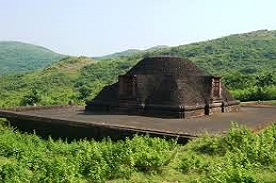
Udayagiri is archaeological site, situated in the 90 kilometres to the north-east from Bhubaneswar and 70 kilometres north-east of Cuttack in Jajpur district. is the largest Buddhist complex. It is composed of major stupas and monasteries. This heritage tourist site is also known as ‘Diamond Triangle’ of Odisha along with Ratnagiri and Lalitgiri. Udayagiri known as Madhavapura Mahavihara was a prominent centre of Buddhism between the 7th and 12th centuries.


